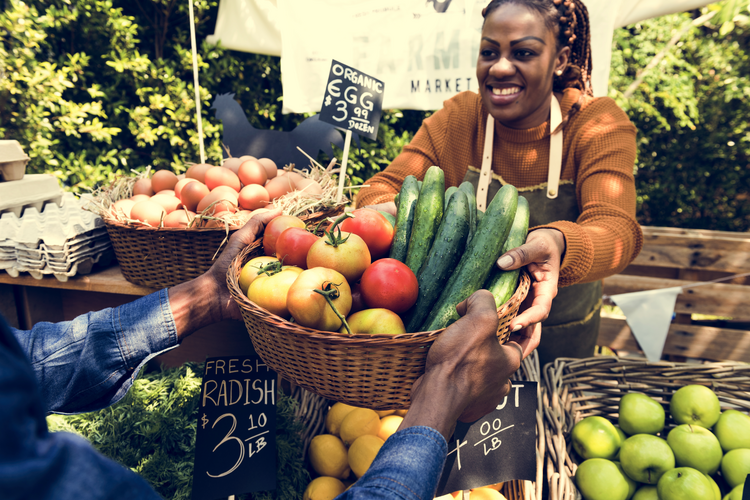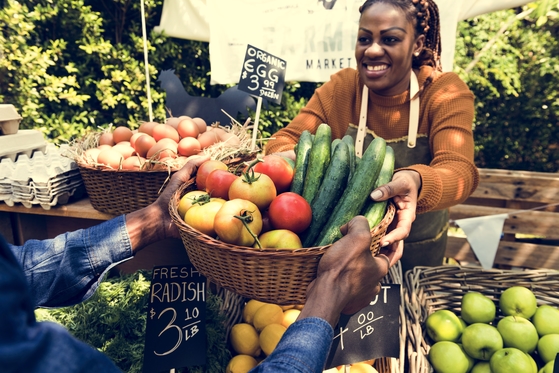Welcome to Thomas Insights — every day, we publish the latest news and analysis to keep our readers up to date on what’s happening in industry. Sign up here to get the day’s top stories delivered straight to your inbox.

Have you noticed that there’s something charmingly ritualistic about visiting the local farmers market?
You wake up bright and early on a Sunday morning, grab your reusable shopping bag, and step outside into the sunshine. Within a few minutes of the stroll, you’re greeted with an abundance of fresh produce and a host of familiar faces.
On a good day, you’ll arrive early enough to see Amelia, a local farmer, unloading dozens of baskets of fresh strawberries from the boot of her car. These were hand-picked from her farm only last night and now here you are: ready and eager to select the juiciest batch from the lot.
As you devour the strawberries, you wander around the rest of the market, picking up a few ingredients for tonight’s dinner and chatting to some of the farmers and local residents before making your way home.
The Rising Popularity of Farmers Markets
Farmers markets are by no means a new phenomenon, but they have been growing in popularity over the past few decades. In the 1980s, wealthy households became more interested in buying sustainable, fresh, and local produce, while lower-income families were able to use certain federal benefits to buy their essentials from these marketplaces.
By the 1990s, the U.S. Department of Agriculture had begun documenting the number of U.S. farmers markets and it became increasingly common to see diverse and multifunctional markets serving a broad demographic.
Today, consumers value the total transparency that comes with shopping at a local farmers market. They know exactly where their food is coming from and how it was farmed, what pesticides have been used, and when it was picked. In addition, they know they are supporting their local economy, reducing their carbon footprint, and eating seasonally.
Alongside these benefits, farmers markers have proven themselves to be largely immune to the supply chain challenges faced by the U.S.’s largest grocery stores. Indeed, consumer dependency on farmers markets increased dramatically in the wake of COVID-19, with many farmers markets enjoying their biggest-ever sales in 2020.
What factors have enabled farmers markets to thrive in adversity while their multinational grocery store counterparts struggled?
Are Farmers Markets Immune from Supply Chain Disruption?
Shopping at farmers markets was a way for consumers to avoid overcrowded grocery stores, thus reducing the risk of contracting COVID-19. But these markets also served to address food shortages; filling many of the food supply gaps brought about by unprecedented supply chain disruption.
Food scarcity was such a major problem that 45 million people experienced food insecurity in 2020 — an increase of 10 million from the previous year. In response to this, the U.S. Department of Agriculture developed The Coronavirus Food Assistance Program. This invested $19 billion into moving locally and regionally produced food into schools, food banks, and farmers markets. Farmers markets also worked quickly to adapt their service offerings during the pandemic, trialing options such as pre-packaged goods and drive-through pick-ups.
Multinational grocery stores were unable to do the same since they must navigate highly complex, and often international, supply chains. This requires sourcing products from hundreds of different suppliers across the globe, careful inventory management, adapting to shifting consumer demands, and planning long supply routes. Not only that, but they must ensure produce is kept fresh and safe for consumption.
When you throw in the added challenge of a global pandemic, a natural disaster, geo-political unrest, or trade disputes, things get even more complex. In recent years, professionals within the food supply chain industry have battled border closures and delays, factory shutdowns, and product stockouts.
While farmers markets operate like pop-up grocery stores, they have no dependency on these long and complex supply chains, are not expected or required to supply specific products to the end consumer, and will never suffer the delays and expenses that come with international importing.
Operators at farmers markets can also mitigate risk by sourcing from multiple farmers in the same area. If a crop should fail or a supplier is unable to bring their produce to market, customers will have several other options to choose from.
What Challenges Do Farmers Markets Face?
Farmers markets may not have supply chain struggles to contend with, but running these businesses comes with a different set of challenges.
For starters, a manager of a farmers market must be a skilled logistics professional — juggling multiple vendors, customer footfall, and various health and safety requirements.
Secondly, farmers markets often struggle with access to, and budget for, the necessary technology. Consumers will spend more money when they can pay using a credit card, but lots of markets still operate on a cash-only basis.
Thirdly, large grocery store chains have been known to create in-authentic “farmers market” product lines, which undermine the genuine sustainability of farmers markets.
Finally, suppliers typically struggle to make a living from farmers markets alone, which means they are somewhat dependent on wholesale business. This problem could be addressed by encouraging direct relationships and negotiations between farmers market suppliers and wholesalers. Not only would this drive sustainable and ethical food supply chains, but it would also improve profitability for farmers.
Image Credit: Rawpixel.com / Shutterstock.com


